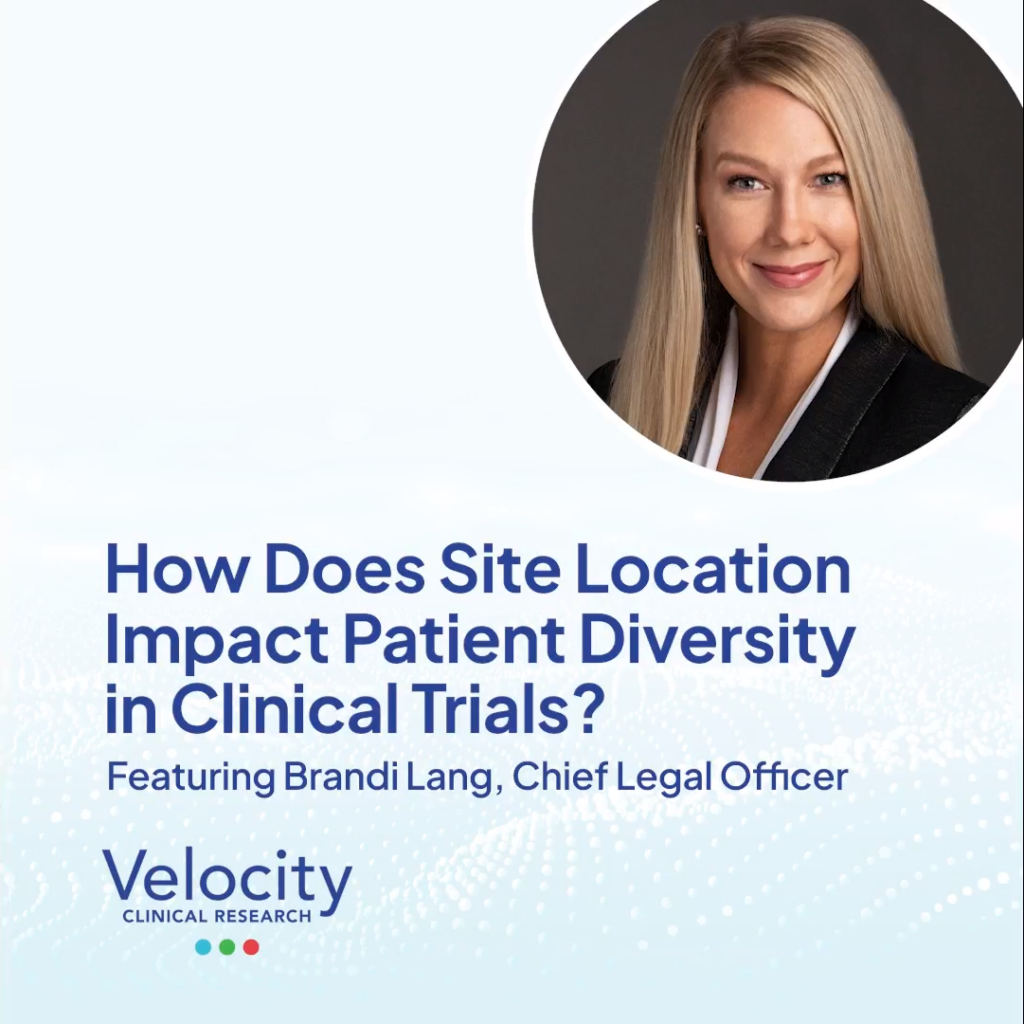Velocity recently asked some key employees to come together and discuss a wide array of issues impacting diversity, equity, and inclusion (DEI) in clinical trials. Velocity’s ongoing goals are to share best practices, identify and address shortcomings, and bring as many perspectives and viewpoints to the table as possible to advance clinical trial science and deliver vital new drugs and treatments to patients quicker.
In this article, Velocity members of staff discuss the importance of site location and its impact on clinical trial diversity.
In the classic Kevin Costner baseball film “Field of Dreams,” a skeptical character is urged to construct a playing field in a remote area of Iowa encouraged by the famous line, “if you build it, they will come.”
In the world of clinical trials, one of the greatest challenges to promoting diversity is making research sites accessible to those living in more rural and isolated parts of the country. It’s an issue Velocity Clinical Research takes very seriously from the earliest stages of site location planning, says Brandi Lang, Chief Legal Officer for Velocity.
Site selection is “an exceptionally important issue that takes an incredible amount of planning. We are always looking ahead so that we are ready to bring on sites that can provide us better access to diverse patient populations,” she said at a recent diversity panel featuring a wide swath of Velocity employees.
The issue is personal for Lang. “It’s frankly one of the reasons why I came to work in clinical research,” she recalls. “I had a family member where we needed to seek an additional arrow in the quiver by which to seek advancement of treatment for a medical issue, and because of [their] rural location, there were hard questions and hard decisions that had to be made” because there wasn’t a clinical trial study site anywhere near where they lived.
Patients should not have to face those kinds of decisions, Lang believes. It’s a matter of building sites in different regions to improve access for all, she says. “If we are making them choose between leaving their home where they have existing support systems and choosing to participate in an urban center, we’re going to cut off that that ability to participate for so many participants.”
At its core, Velocity’s strategy is to put sites in locations to best advance diversity in clinical trials. “It’s important that we’re seeking to afford rural access and not just [urban] access to clinical trial participation.” she said.
The urban/rural divide
The urban/rural divide is evident in America’s politics and other areas. When it comes to clinical trials, it’s an issue with deep roots, Lang notes. “Historically, we’ve seen quite a bit of clinical research placed in urban centers in academic areas with significant health system access for clinical trial participation.”
Failing to address the issue weakens clinical trial diversity and research science. “If we’re focusing only in urban areas, we’re also not benefiting patients who could provide meaningful data and information which can better hone the development of these vaccines and drugs and therapeutics,” Lang said.
“Velocity is everyday seeking to narrow those gaps and afford greater access by bringing a greater diversity to trials and a greater diversity in therapeutic areas across communities in varying sizes across the US and across Europe,” she said.
When there isn’t travel infrastructure, build it
And while geography is a vital issue, “there are other details and sensitivities to be aware of when working to expand trial reach,” Lang said. For example, many potential trial patients don’t own a car. Without access to practical public transportation, they are far less likely to participate in a trial, Lang said.
“Velocity has been working across the country at ensuring that our site locations are geographically accessible and that we’re on public bus routes,” she said.
But what do you do if there’s not an existing bus site? You get one built, Lang said. “I remember I spent countless hours working with one city and near one of our northern site locations to get a bus stop on the corner where our site was located.”
And don’t forget a covered awning at the bus site, she added. “If they’re going to have to wait for a couple minutes as that bus is arriving, [we want] them to be undercover,” Lang said.
It’s about philosophy, backed with the scale and the means to see it through, Lang said. “We are able to spread out those larger pools of resources to advance objectives more quickly and more demonstrably, which advances clinical trial patient diversity in meaningful and impactful ways,” she said.

